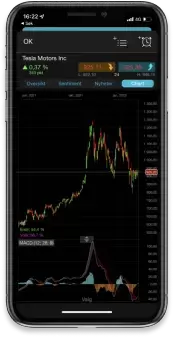US markets managed to hold up pretty well last week, with the Dow gaining for the fifth week in succession, while the S&P 500 only lost a small amount of ground. Events last week managed to tell us a lot more about how the global economy is performing, and the US economy apart, it’s not particularly encouraging.
The divergence that we saw at the end of last year, with the US economy outperforming, shows no signs of reversing with the IMF warning that the global economy is likely to slow even further in 2019, with Europe and China at particular risk.
These warnings don’t appear to have deterred European investors from piling back into European stocks, with the German DAX and French CAC 40 hitting their highest levels since early December, though markets in Europe look set to open slightly lower this morning.
This is despite increasing evidence that both economies have continued to struggle heading into 2019, with the French economy feeling the effects of the recent public disorder, brought about by the yellow vest protests or 'gilet jaunes'.
As we come to the end of January it looks set to be a decent month for most equity markets, however it still seems a little early to sound the all-clear after what was a pretty awful end to 2018, with the FTSE 100 in particular underperforming relative to its peers this month.
This caution seems well warranted given last week’s Bank of Japan and European Central Bank decisions, which were very much tilted to the dovish side over concerns about a weakening economic outlook, as well as poor trade numbers. We can also look forward to the next stage of this week’s US-China trade talks, when the Chinese delegation arrives in Washington DC, led by President Xi’s deputy, Vice Premier Liu He.
Following on from last week’s key central bank meetings, we’ll also be hearing from the US Federal Reserve this week, and US policymakers’ views on the future path of interest rates for the US economy. All of the indications are for a dovish message, given recent comments from a host of Fed officials in recent weeks. This should be fairly easy to spin given the shutdown of the US government this month, which came to an end over the weekend, with officials likely to hide behind the lack of economic data this month, which stopped the collection of economic statistics.
It’s also another big week in Westminster as the next stage in the Brexit debate starts to take shape tomorrow. The pound has made some decent gains over the past few weeks on the basis that a 'no deal' Brexit seems a much more distant prospect.
A lot of this still seems more like wishful thinking than anything else, given the parliamentary arithmetic, as well as the politics. Markets seem to have a lot more faith in politicians than many think they deserve, nonetheless the pound hit 18-month peaks against the euro on the basis that an article 50 extension could find its way into an amendment when parliament meets to debate the latest attempt to break the deadlock over the UK’s withdrawal agreement and political declaration tomorrow.
EUR/USD rebounded from the 1.1285 level last week, but needs to break back above the 1.1420 level to stabilise and signal a move towards the 1.1500 level. Downside pressure remains intact while below 1.1420 with the potential for a move towards the November lows at 1.1215 and the 1.1000 area.
GBP/USD made more strong gains last week moving seamlessly through the 200-day MA at 1.3060 and now has the potential to revisit the October highs at 1.3260. Only a move back below the 1.3020 area delays this and opens up a return to the 1.2820 area.
EUR/GBP continues to look weak with the potential for further losses on a break below the recent lows at 0.8615/20. A move down through the 0.8600 area has the potential to open further losses towards the 2017 lows at 0.8300. We need to see a move back above the 0.8730 area and the 200-day MA at 0.8860 to stabilise.
USD/JPY is currently capped just below the 110.20 area, and while below here the risk is we head back below support at the 109.20 area, and back towards the 108.70 and 108.20 area. Above 110.20 argues for a move towards 111.00.
Disclaimer: CMC Markets is an execution-only service provider. The material (whether or not it states any opinions) is for general information purposes only, and does not take into account your personal circumstances or objectives. Nothing in this material is (or should be considered to be) financial, investment or other advice on which reliance should be placed. No opinion given in the material constitutes a recommendation by CMC Markets or the author that any particular investment, security, transaction or investment strategy is suitable for any specific person. The material has not been prepared in accordance with legal requirements designed to promote the independence of investment research. Although we are not specifically prevented from dealing before providing this material, we do not seek to take advantage of the material prior to its dissemination.







